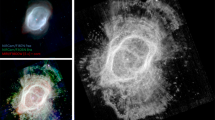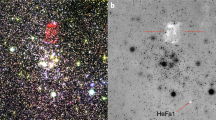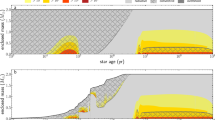Abstract
ZANSTRAS recent determination of the temperatures of the O-stars in planetary nebulæ1 makes it appear extremely likely that these stars are all generically in the ‘white dwarf’ class, with mean densities far above anything known on the earth. He has found temperatures between 30,000° and 100,000° for about twenty of these objects, and yet their luminosities are comparatively small. For a fairly typical nebular nucleus we may assume a photographic magnitude of 12.5 with a parallax of 0.002″, making the absolute magnitude + 4, or about eight magnitudes fainter than typical galactic O-stars. It is, of course, true that the luminous efficiency falls off with rising temperature in this range, but an increase in temperature at constant radius must always involve an increase in brightness, proportional, even in the farthest part of the Rayleigh-Jeans region, to at least the first power of the temperature. Thus these stars must be of very small radius.
This is a preview of subscription content, access via your institution
Access options
Subscribe to this journal
Receive 51 print issues and online access
$199.00 per year
only $3.90 per issue
Buy this article
- Purchase on Springer Link
- Instant access to full article PDF
Prices may be subject to local taxes which are calculated during checkout
Similar content being viewed by others
References
Zeit.f. Astrophysik, 2, p. 1; 1931.
Cf. Russell, Dugan, and Stewart, "Astronomy", p. 835.
Mon. Not. R.A.S., 91, p. 39; 1930.
Author information
Authors and Affiliations
Rights and permissions
About this article
Cite this article
RUSSELL, H., ATKINSON, R. Stellar Structure. Nature 127, 661–662 (1931). https://doi.org/10.1038/127661a0
Issue Date:
DOI: https://doi.org/10.1038/127661a0
This article is cited by
-
The Internal Temperature of White Dwarf Stars
Nature (1931)
Comments
By submitting a comment you agree to abide by our Terms and Community Guidelines. If you find something abusive or that does not comply with our terms or guidelines please flag it as inappropriate.



